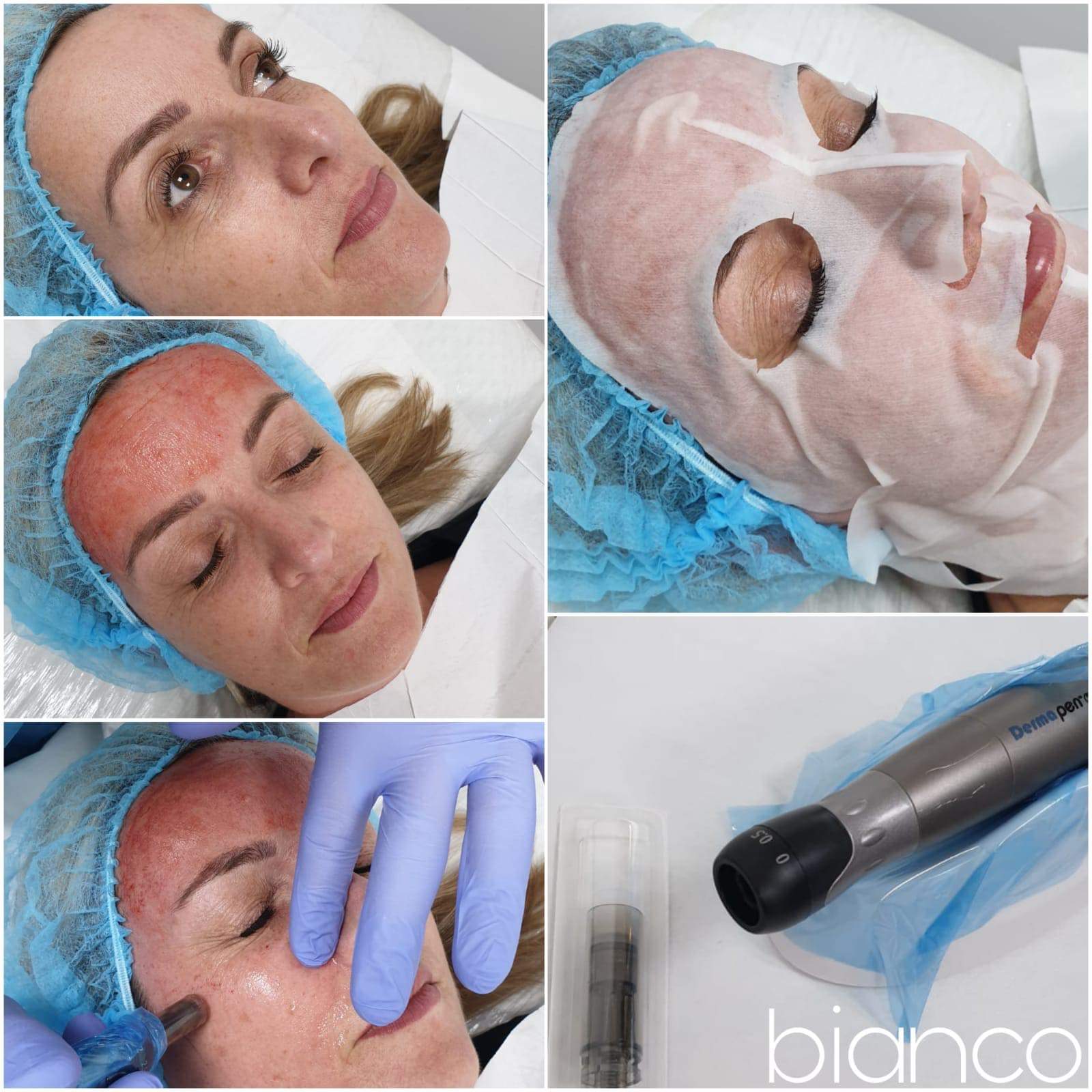Microneedling / PRP
Microneedling
/ PRP
Microneedling / PRP
At Wondermedspa, we use the most cutting-edge technology and science to reactivate hair growth without surgery, Our providers offer a variety of skin treatments including Microneedling whit PRP, chemical peels, and/or medical-grade skin care products to treat wrinkles, age spots and reduce acne scarring. We welcome you to contact us to learn more about acne treatments and to set up a consultation with our caring acne experts. You are just a click away from a treatment that will soon have you showing a full head of lustrous, thick hair, or youthful skin just like you did when you were in the prime of your youth.
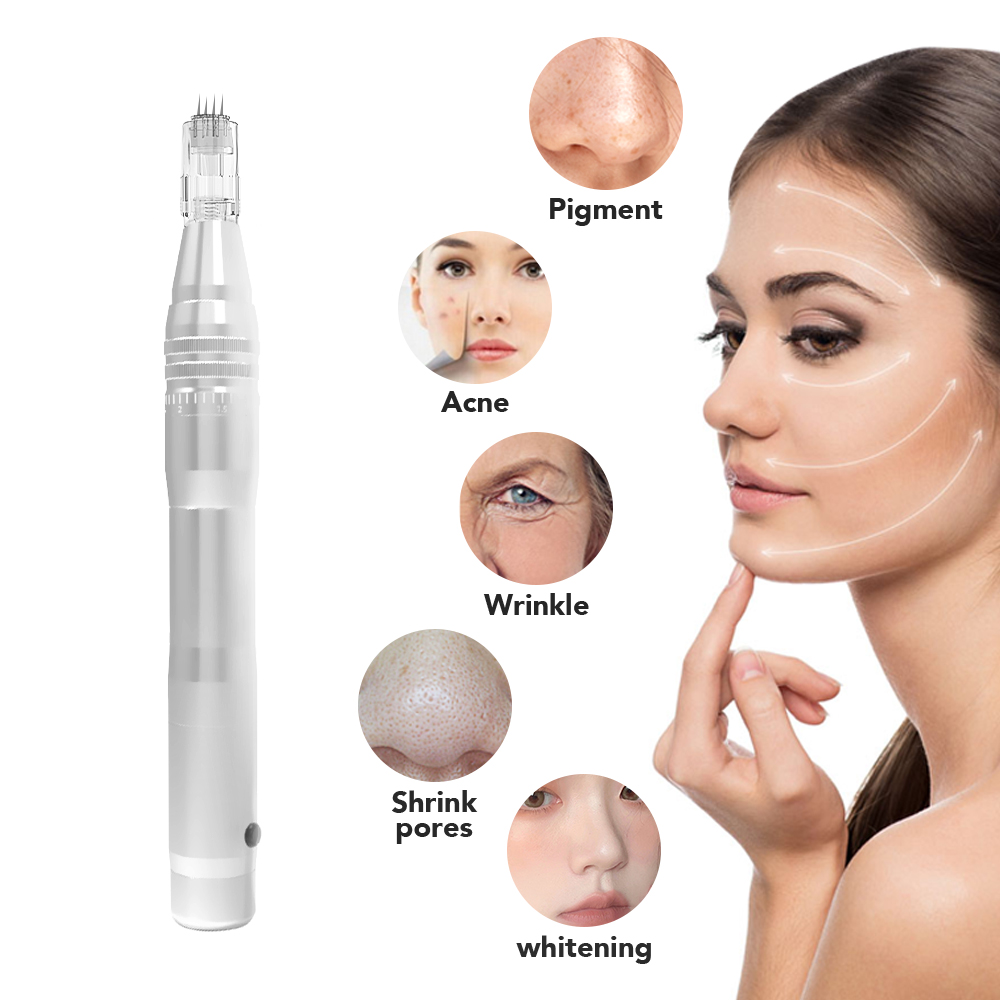
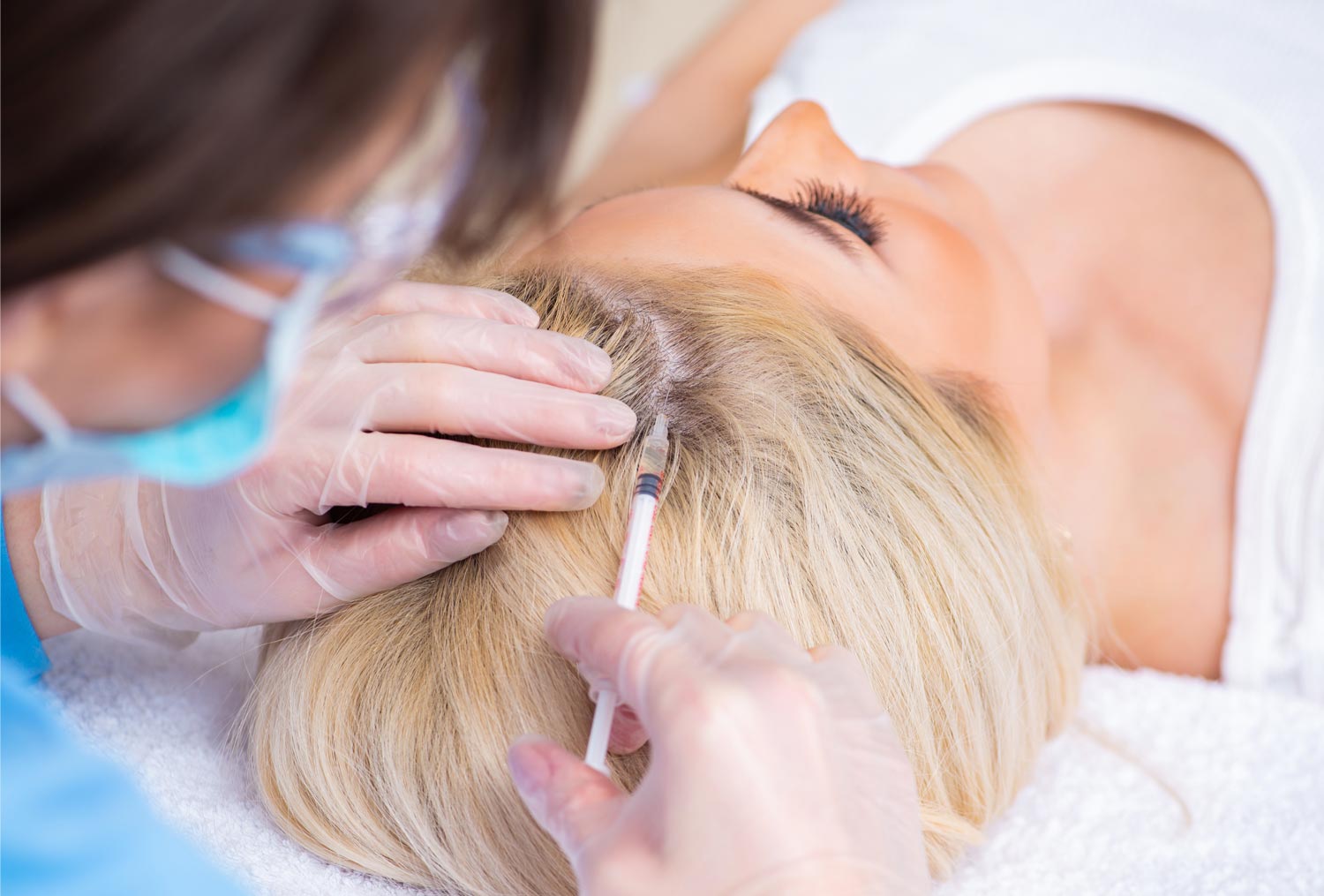
PRP (platelet-rich plasma) therapy for hair loss is a three-step medical treatment in which a person’s blood is drawn, processed, and then injected into the scalp. Some in the medical community think that PRP injections trigger natural hair growth and maintain it by increasing blood supply to the hair follicle and increasing the thickness of the hair shaft. Sometimes this approach is combined with other hair loss procedures or medications. There hasn’t been enough research to prove if PRP is an effective hair loss treatment.
*First, your blood is drawn — typically from your arm — and put into a centrifuge (a machine that spins rapidly to separate fluids of different densities).
*Second, after about 10 minutes in the centrifuge, your blood will have separated into in three layers: platelet-poor plasma, platelet-rich plasma and red blood cells. Lastly, the platelet-rich plasma is drawn up into a syringe and then injected into areas of the scalp that need increased hair growth.
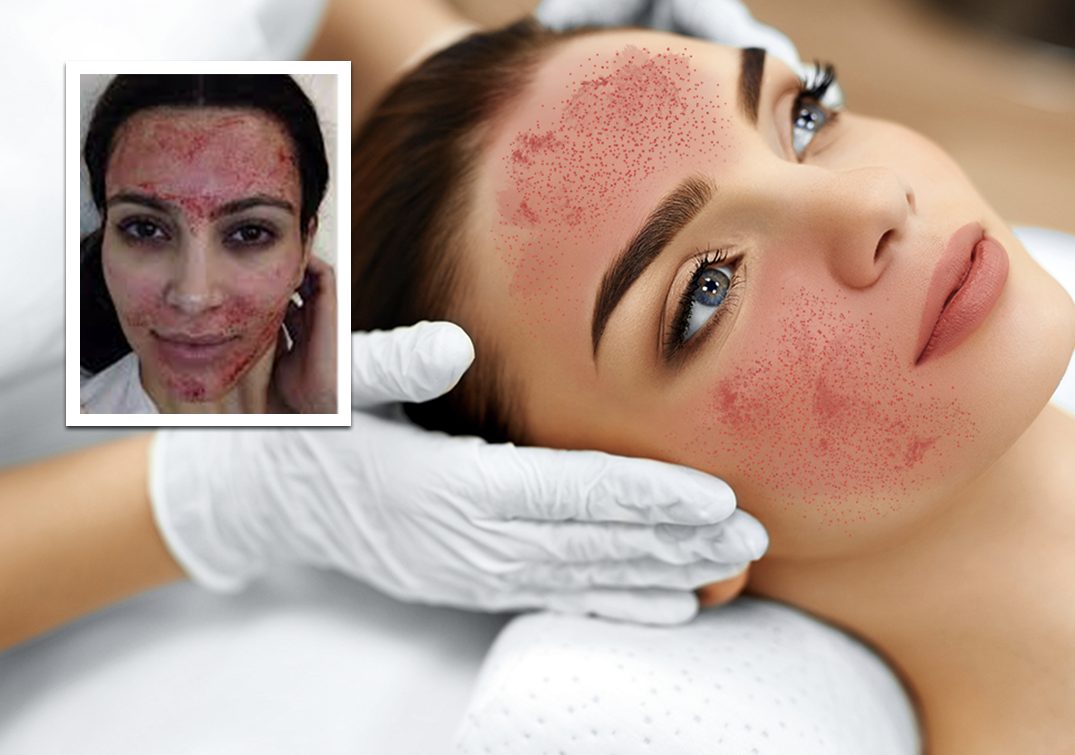
The Vampire Facelift is essentially a type of PRP, or Platelet Rich Plasma Therapy that takes advantage of growth factors found in blood platelets. These growth factors encourage production of collagen as soon as it is injected into the skin. Popular as a facial rejuvenation technique in Europe and Japan since its approval in 2006.
Step 1: numbing cream
For the first step of a Vampire Facial, your therapist will cleanse the skin and remove makeup, and then apply a numbing cream to the entire face. This is left on to absorb for roughly 15 minutes while they prepare for the blood extraction.
Step 2: blood extraction
The second step of the process is the all important blood extraction. It goes without saying that if you’re not a fan of needles and squirm at the sight of blood this facial may not be for you. It only takes a matter of seconds though and other than a slight pin prick it's pain free and very straightforward.
Step 3: centrifuge
Once a small vial of blood has been taken from your arm, the next stage is to centrifuge it. This important part of the treatment is what separates the platelet rich plasma (the key ingredient of the facial) with the red and white blood cells. PRP is a rejuvenating part of our blood, and has been used in a medical setting for over 30 years helping to treat a multitude of skin traumas – from burn victims to acne scarring. It’s only in the last decade that it’s started to make waves as a cosmetic treatment due to its host of anti-ageing benefits.
Step 4: PRP extraction
Once the blood has been left to spin (at 300 RPM no less) your therapist will be ready to begin. They’ll start by carefully removing the plasma from the vial and transferring it into the injection needles.
Step 5: injection time
The injections begin! Trust us, it looks scarier than it is. The injections are superficial and only penetrate the top layers of your skin – plus the numbing cream keeps pain levels at a minimum. A slight stinging sensation is all you should feel, but hey – no pain no gain!
Step 6: repeat
This process is then repeated over the entire face, focusing on areas of concern. The act of injecting plasma back into your skin creates small controlled traumas, allowing it to absorb more deeply. When it reaches a wounded area, the plasma helps it to clot, which in turn regenerates new skin, encouraging accelerated elastin and collagen production.
Step 7: hyaluronic acid
Once the injections are complete, your therapist will often apply a vitamin-rich hyaluronic acid to help soothe your skin after the treatment. Ice can also be applied.
Step 8: LED facial
An optional final step of the treatment is to finish it off with an express LED facial to help kickstart the healing process. Downtime is minimal though, and apart from a small amount of bruising which can occur, your skin should be back to normal within a day or two.
Step 9: you're done!
And the verdict? Well you won’t start seeing visible results until a few weeks in when the PRP starts to settle, so don’t expect to roll out of bed the next morning with perfect skin. But one month in and you’ll definitely start to see a difference. Skin is visibly plumper, fine lines and dark circles have decreased, and overall you’ll have a brighter, more youthful glow. In other words, it has our stamp of approval and then some.
For rejuvenated, youthful, tightened skin without the downtime associated with a surgical facelift, the Vampire Facelift, medically referred to as Platelet Rich Plasma (or PRP) Therapy is a promising anti-aging treatment to
— Improve skin circulation for a rosy, healthy glow.
— Stimulate tissue regeneration.
— Increase Collagen production.
— Smooth out lines and wrinkles.
— Improve skin texture.
— Shrink large pores.
— Reduce acne scarring.
— Minimal Downtime.
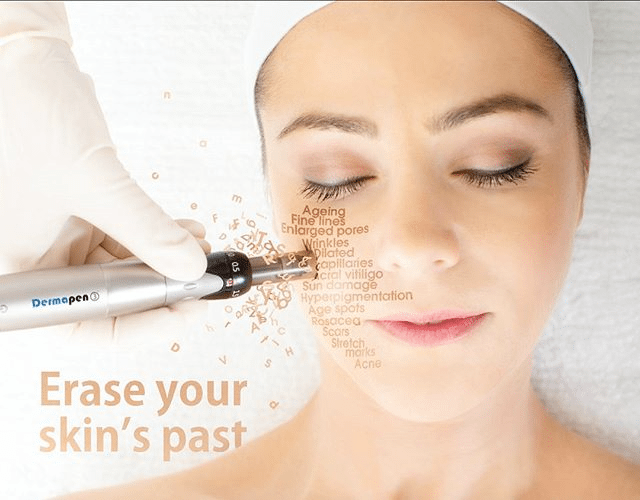
Microneedling
Beauty on point. Get the elasticity and glow of youthful-looking skin with our collagen-boosting microneedling treatment.
WHAT IS MICRONEEDLING?
Microneedling is a minimally-invasive treatment designed to address a variety of skin issues, including fine lines, wrinkles and hair loss.
Also known as collagen induction therapy (CIT), percutaneous collagen induction (PCI) or even a vampire facial (thanks Kardashians!), microneedling is performed using a device referred to as a Dermapen.
The Dermapen creates micro injuries in the skin that trigger the body to release growth factors, which causes the body to increase its production of collagen and elastin - the two key proteins that help keep skin looking youthful. As we age, our collagen production slows down which contributes to wrinkles and other signs of aging. Microneedling offers you a rejuvenated and more youthful appearance without the need for surgery. As a Board-Certified Oculoplastics and Reconstructive Plastic Surgeon and Non-Surgical Facial Rejuvenation Specialist, Dr. Baljeet K. Purewal and her team are experts in microneedling and have been serving the Northern NJ area for over a decade.
WHAT ARE SOME OF THE MICRONEEDLING BENEFITS?
Short term, microneedling makes skin look plumper and more radiant. Long term, it encourages the body to create more collagen and elastin for thicker and smoother skin. It also allows your skincare products to penetrate deeper for boosted results. Microneedling can address some of the most common skin issues and aesthetic concerns including:
- Fine lines
- Wrinkles
- Overly large pores
- Hyperpigmentation
- Sunspots
- Scarring
- Acne
- Alopecia
- Rosacea
- Melasma
- Loose skin
- Uneven skin texture
- Stretch marks.
WHO IS MICRONEEDLING SUITABLE FOR?
Microneedling is safe for use on all skin types and every skin color.As microneedling causes very little damage to the epidermis, the treatment is a safer alternative to traditional lasers and chemical peels for those with darker skin tones.
HOW DOES MICRONEEDLING WORK?
As we age, our body reduces the amount of collagen - the protein that gives skin its youthful texture and tone - it produces. Fine lines and wrinkles develop as a result. The body also slows its production of elastin, which gives skin its elasticity. The Dermapen used in microneedling uses fine, sterile needles to create tiny micro punctures in the skin. These fine needles penetrate the skin, creating small injuries which trigger the body to increase its production of collagen and elastin. The needles used in the Dermapen vary in length, Our lead aesthetician to choose a needle designed to reach a precise depth. Skin is left tighter, smoother, and brighter without the need for surgery.
CAN I ADD OTHER TREATMENTS TO ENHANCE THE MICRONEEDLING RESULTS?
Yes! Many patients are suitable for add-on treatments that are specifically designed to enhance the results from a microneedling procedure, such as PRF. Platelet-rich fibrin (PRF) combined with a microneedling procedure can be used to improve your skin quality and texture even further. We also use this combination of procedures to treat dark circles.
WHY SHOULD I CHOOSE MICRONEEDLING OVER OTHER TREATMENTS?
While all skin rejuvenation treatments offer great results, the benefits of microneedling or collagen induction therapy go beyond just improving your skin’s tone and texture.These include:
- All the skin layers remain intact.
- Fewer side effects.
- Minimal healing time.
- Less painful.
The microneedling procedure can also significantly improve wrinkles, decrease the size of the pores, and reduce the visibility of acne scars.
HOW DEEP DO THE MICRONEEDLES OF THE DERMAPEN PENETRATE?
Needle depth depends on the condition being treated and the thickness of your skin in the targeted areas. We determine the depth that the microneedles will penetrate into the skin before the procedure.
DOES THE MICRONEEDLING PROCEDURE HURT?
Our patients often liken the sensation of microneedling to the feeling of sandpaper gently moving across your skin. To minimize discomfort, we apply topical numbing cream. Our state-of-the-art Dermapen also vibrates during the procedure; this vibration helps interrupt the receptors responsible for signaling the brain to feel pain. Some areas are slightly more sensitive than others. For example, areas with less tissue (e.g., the forehead) tend to be more sensitive than the areas that have more tissue (e.g., the cheeks). However most patients tolerate the microneedling procedure well and, of course, we do everything we can to make it as comfortable as possible.
WHEN CAN I SEE THE RESULTS OF MY MICRONEEDLING TREATMENT?
While some improvement may be seen right away, you’ll typically notice significant improvements after 10 - 14 days.This is because as the growth hormones stimulate the production of elastin and collagen, your skin continues to improve. You can expect to see an improvement in your:
- Fine lines.
- Skin texture.
- Pores.
- Skin tone.
- Pigmentation variances.
- Scarring.
- Dark circles.
If you choose to have collagen induction therapy at regular intervals, your skin will keep getting better as the treatments trigger the body to produce more and more of these vital proteins.
WHAT WILL THE RESULTS OF MICRONEEDLING BE?
Within a few days, you’ll experience smoother and healthier-looking skin and smaller pores. If you wear makeup, you will notice quicker and easier foundation application. Your skincare products will also tend to penetrate deeper compared to before your microneedling treatment for boosted results.
HOW LONG IS THE RECOVERY PROCESS?
The aggressiveness of the treatment determines healing time. However, you can expect your recovery to last anywhere from two to five days.Most of our patients feel comfortable enough to return to their approved normal activities within 72 hours of their treatment.You can apply makeup after 24 hours post-surgery. Before this period, makeup must be strictly avoided.
HOW FREQUENTLY SHOULD THE MICRONEEDLING TREATMENTS BE PERFORMED?
The most dramatic results are seen after three collagen induction therapy treatments in a row. We recommend having three treatments spaced between four to six weeks apart. Having regular collagen induction therapy promotes continued collagen and elastin production as well as skin cell renewal. Microneedling can be performed regularly to maintain healthier skin with a more youthful appearance.
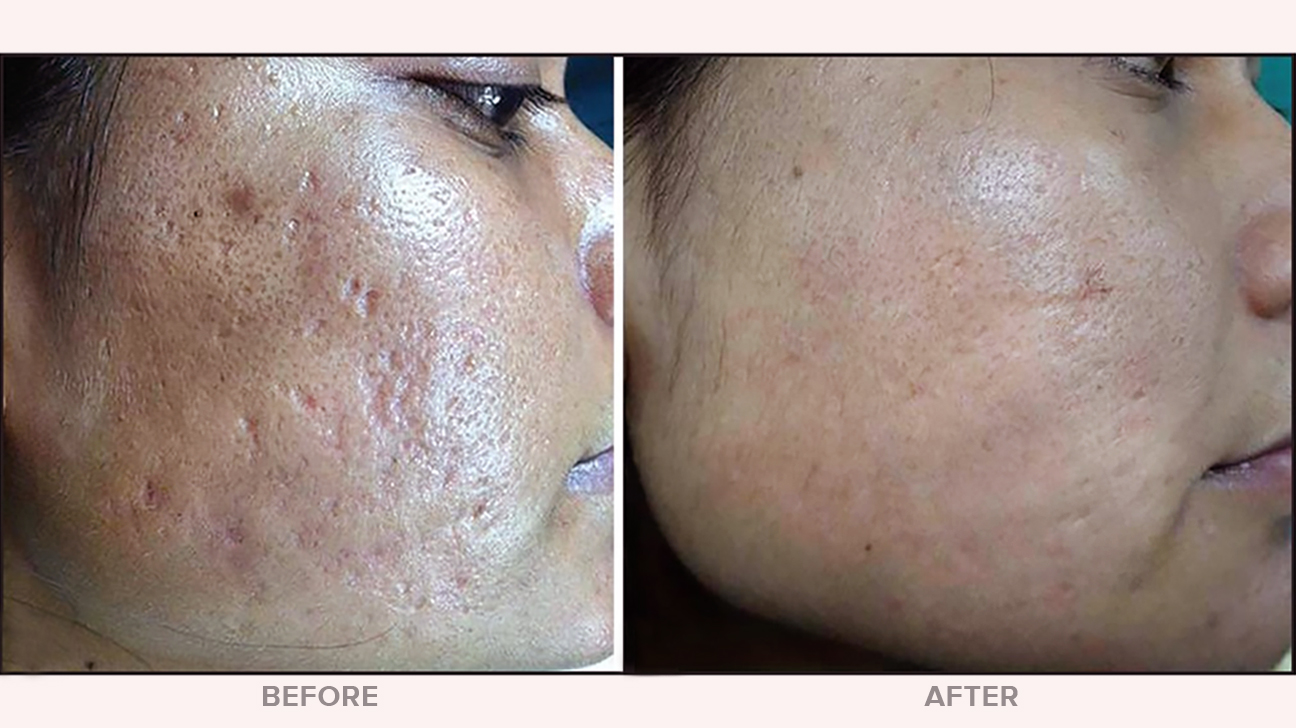
Microdermabrasion combined with other types of treatment may produce superior results compared to microdermabrasion alone.
As if acne isn’t frustrating enough, sometimes you might have to deal with scarsthat pimples can leave behind. Acne scars can develop from cystic acne or from picking at your skin. Like other types of scars, those from acne can last for several months or even years.
If you’ve tried over-the-counter products to no avail, you might consider microneedling to get rid of your acne scars. Also called skin needling or dermarolling, this procedure is done by a dermatologist or skin care specialist to treat a variety of skin care concerns, including scars and wrinkles. It may also help with acne scars and clinical studies have shown overall positive results..
Effectiveness of microneedling for acne scars:
As the name suggests, microneedling uses fine needles that prick your skin. During the skin-pricking process, your skin produces more collagen in an effort to heal the small wounds from the needles.
The theory is that new collagen that’s formed will help smooth out your skin’s appearance, helping to fill in fine lines, wrinkles, and scars. To that end, skin needling may be used for:
- burn scars
- acne scars
- surgical scars
- melasma
- sun damage
- stretch marks
- sagging skin
- large pores
- hair loss
According to the American Academy of Dermatology, microneedling works best for depressed — not raised — acne scars. This has to do with the collagen-inducing effects. If you have raised acne scars, you already have excess collagen in the area.
Some studies have also noted that the effects of skin needling on acne scars are even better when the treatments are combined with vitamin C or PRP.
Unlike other minimally invasive skin corrective treatments, such as laser therapy, microneedling is considered safe for darker skin tones. This is because it doesn’t damage or remove the outer layer of skin. Microneedling is also considered safe for thin and sensitive skin as well.
Side effects of microneedling for acne scars:
Initially, minor side effects are to be expected from this procedure. These include redness, bruising, and inflammation. However, these should clear up within a few days.
During the first few days after your microneedling procedure, you’ll want to avoid direct sun exposure and rigorous exercise. Exfoliants and alcohol-based skin products can also make side effects worse, so you should avoid these.
It’s also possible to experience acne breakouts after skin needling. However, these should be mild and clear up on their own. Avoid picking at your skin, as this can lead to further scarring.
The severity of microneedling side effects also depends on how you prepare for the procedure. Tanning or direct sun exposure can irritate your skin, making inflammation worse. Drinking plenty of water the day before and during the hours leading up your treatment can also reduce the chances of bruising and inflammation. You’ll also want to come to your appointment without any makeup on.
Unlike more invasive skin therapies, microneedling is considered quick. Many people choose to go back to work the day after their treatment, depending on their side effects. You can apply a lightweight powder if you want to camouflage any bruises or redness.
We may not recommend microneedling for your acne scars if you’re currently experiencing an acne breakout. It’s also not recommended if you have rosacea or eczema, as the procedure can worsen your symptoms.
You’ll want to talk to a doctor if you scar easily, as microneedling could potentially create more scars on top of the ones caused by acne. Finally, you shouldn’t get this treatment if you’re pregnant or have recently had skin radiation therapies.
Even though microneedling is an aesthetic procedure not covered by medical insurance, the overall costs are far less than surgery.
